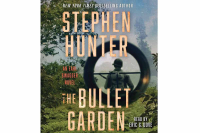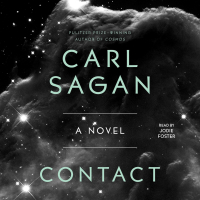Rash’s Appalachia is both rich and flawed
 Ron Rash’s latest collection of short stories echos a theme that runs through all of his works: an awareness that Appalachia is in transition, that it is becoming something else. Of course, this is a quality that is shared by all things — what the poets call “mutability” — but in this instance, the author is mindful of what our world is becoming in contrast to what it once was. Like the drowned girl in his short story by the same title, Appalachia may be undergoing a “sea change” and will emerge as “something rich and strange.” The substance may be alien, repugnant and/or fascinating.
Ron Rash’s latest collection of short stories echos a theme that runs through all of his works: an awareness that Appalachia is in transition, that it is becoming something else. Of course, this is a quality that is shared by all things — what the poets call “mutability” — but in this instance, the author is mindful of what our world is becoming in contrast to what it once was. Like the drowned girl in his short story by the same title, Appalachia may be undergoing a “sea change” and will emerge as “something rich and strange.” The substance may be alien, repugnant and/or fascinating.
Final volume of Churchill biography a long-awaited gem
 William Manchester, author of a number of best-selling books, including The Death of A President, American Caesar, and Goodbye, Darkness, spent nearly 30 years writing a three-volume biography of Winston Churchill. Still a young man when I read the first volume, The Last Lion: Visions of Glory, in 1984, I was entranced by his account not only of Churchill but also of the Victorian Age into which he had been born and the Edwardian Era in which he won his first real measure of fame. Manchester gave me and thousands of other readers more than the man: he recreated the world in which Winston Churchill had so exuberantly lived.
William Manchester, author of a number of best-selling books, including The Death of A President, American Caesar, and Goodbye, Darkness, spent nearly 30 years writing a three-volume biography of Winston Churchill. Still a young man when I read the first volume, The Last Lion: Visions of Glory, in 1984, I was entranced by his account not only of Churchill but also of the Victorian Age into which he had been born and the Edwardian Era in which he won his first real measure of fame. Manchester gave me and thousands of other readers more than the man: he recreated the world in which Winston Churchill had so exuberantly lived.
1967 novel sheds light on obscure mass drowning
 In recent years, I have become interested in an obscure incident that occurred in Jackson County in 1882 — the accidental drowning of 19 chain gang convicts who were working on Cowee Tunnel near Dillsboro. Who were they? Where did they come from? Where are they buried? The details are sketchy, and outside of a few basic facts, most of the stories have been passed down by oral tradition.
In recent years, I have become interested in an obscure incident that occurred in Jackson County in 1882 — the accidental drowning of 19 chain gang convicts who were working on Cowee Tunnel near Dillsboro. Who were they? Where did they come from? Where are they buried? The details are sketchy, and outside of a few basic facts, most of the stories have been passed down by oral tradition.
To be (born) or not to be
 Since reading Ben Wattenberg’s The Birth Dearth 25 years ago, the subject of demography has fascinated me. This past week I finished Jonathan Last’s What To Expect When No One’s Expecting: America’s Coming Demographic Disaster (ISBN 978-1-59403-641-5, $23.99), a look at declining fertility rates in the United States and around the world. As libertarian humorist P.J. O’Rourke quipped, Jonathan Last’s book is “a powerful argument that the only thing worse than having children is not having them.”
Since reading Ben Wattenberg’s The Birth Dearth 25 years ago, the subject of demography has fascinated me. This past week I finished Jonathan Last’s What To Expect When No One’s Expecting: America’s Coming Demographic Disaster (ISBN 978-1-59403-641-5, $23.99), a look at declining fertility rates in the United States and around the world. As libertarian humorist P.J. O’Rourke quipped, Jonathan Last’s book is “a powerful argument that the only thing worse than having children is not having them.”
Zombie lore, one bite at a time
 If you are literate and moderately aware of what passes for entertainment in film, popular novels and comics, then you are acquainted with of the strange “zombie” craze that is currently dominating much of the popular arts. In recent years, the popularity of “The Walking Dead” has grown to epic proportions.
If you are literate and moderately aware of what passes for entertainment in film, popular novels and comics, then you are acquainted with of the strange “zombie” craze that is currently dominating much of the popular arts. In recent years, the popularity of “The Walking Dead” has grown to epic proportions.
Novel explores the woes of rich white trash
 Let me take a deep breath and see if I can get this out in one long ugly sentence:
Let me take a deep breath and see if I can get this out in one long ugly sentence:
A man has some sort of mental fugue while driving, slams into a another car, and kills two people; his married brother moves into the man’s house while the man is in prison and a mental evaluation unit; the brother sleeps with the man’s wife; the man sneaks out of the institution, returns home, finds his brother in bed with said wife, and bashes in the wife’s head with a table lamp; the authorities send the man away for treatment which includes living in a wilderness prison where he befriends an Israeli terrorist; the brother, whose wife kicks him out of the house, moves into the man’s house and assumes responsibility for his nephew, a 12-year-old who has a village in Africa named after him for work he did there when he was 10, and for his niece, a 10-year-old who is in a sexual relationship with a female teacher in the private school she attends, a relationship which ends when the brother takes some money to keep the affair quiet rather than reporting it to the authorities; the brother himself engages in internet sex, sleeps with a homemaker whose husband knows everything and then with a much younger woman who later abandons her aged parents to the brother’s care; the brother suffers a stroke, but continues to engage in sex.
Racism and adultery drive Spencer’s novel
 Daniel Emerson is afraid of black people. After a chance encounter with a group of violent African American teenagers left him with a broken wrist, a chipped tooth and an abiding belief that he is going to be killed by either one of his clients or a crack addict, the young lawyer persuades Kate, his current helpmate, to sacrifice the advantages of the big city for the pastoral peace of his hometown, Leyden.
Daniel Emerson is afraid of black people. After a chance encounter with a group of violent African American teenagers left him with a broken wrist, a chipped tooth and an abiding belief that he is going to be killed by either one of his clients or a crack addict, the young lawyer persuades Kate, his current helpmate, to sacrifice the advantages of the big city for the pastoral peace of his hometown, Leyden.
Bringing out the horror of teen angst
 In recent years, there has been a kind of Swedish literary invasion in America, especially in the horror genre. Perhaps the most notable is John Lindqvist, who wrote the cult classic, Let the Right One In, which became an international bestseller two years ago. The film version that followed was enthusiastically endorsed by Stephen King as a landmark in “intelligent and provocative horror film.” Shortly afterwards, Lindqvist released Handling the Undead and The Harbor, which immediately became bestsellers.
In recent years, there has been a kind of Swedish literary invasion in America, especially in the horror genre. Perhaps the most notable is John Lindqvist, who wrote the cult classic, Let the Right One In, which became an international bestseller two years ago. The film version that followed was enthusiastically endorsed by Stephen King as a landmark in “intelligent and provocative horror film.” Shortly afterwards, Lindqvist released Handling the Undead and The Harbor, which immediately became bestsellers.
The stuff of dreams: Important 20th century poet discovered in new book
 As the poet Yvan Goll lay in a hospital in Paris dying of leukemia, a continuous line of some of the most celebrated artists and writers of the first half of the 20th century formed to donate blood to keep Goll alive while he struggled to finish his final volume of poems Dreamweed. With the blood of poets and painters coursing through his veins, he completed his masterwork and quickly died.
As the poet Yvan Goll lay in a hospital in Paris dying of leukemia, a continuous line of some of the most celebrated artists and writers of the first half of the 20th century formed to donate blood to keep Goll alive while he struggled to finish his final volume of poems Dreamweed. With the blood of poets and painters coursing through his veins, he completed his masterwork and quickly died.
Books for holiday gifts can be a risky business
 Think of the times someone has said to you: “You’ll love this book!” This well-intentioned person then shoves a book into your hands and dances off, leaving you gripping a volume, white-knuckled, you are now required to love. Though occasionally you’ll open the book and find yourself surprised by its pleasures, more likely you will read a few lines and sink slowly into the nearest chair as full of lead as Bonnie and Clyde.
Think of the times someone has said to you: “You’ll love this book!” This well-intentioned person then shoves a book into your hands and dances off, leaving you gripping a volume, white-knuckled, you are now required to love. Though occasionally you’ll open the book and find yourself surprised by its pleasures, more likely you will read a few lines and sink slowly into the nearest chair as full of lead as Bonnie and Clyde.













